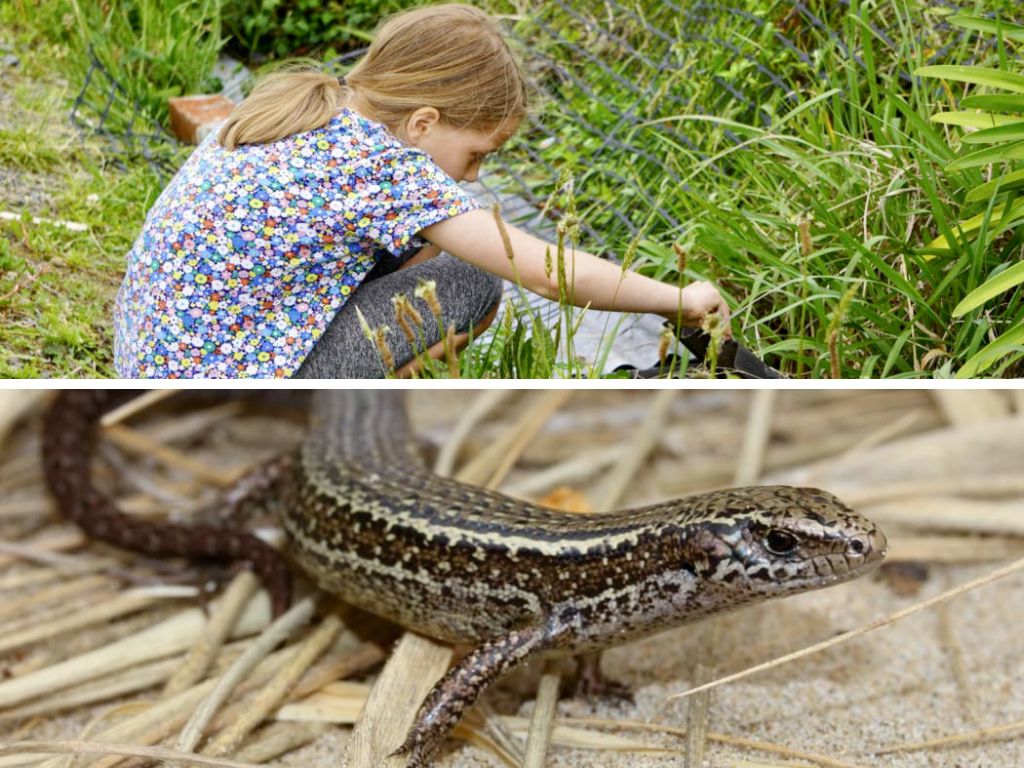An entirely subjective and contestable compilation of wonderful wildlife encounters in 2023 — all unfolding right in people’s gardens. Through the combined efforts of predator control, native planting, and responsible pet ownership, native species can safely visit and live within our shared spaces. Now, that’s cool.
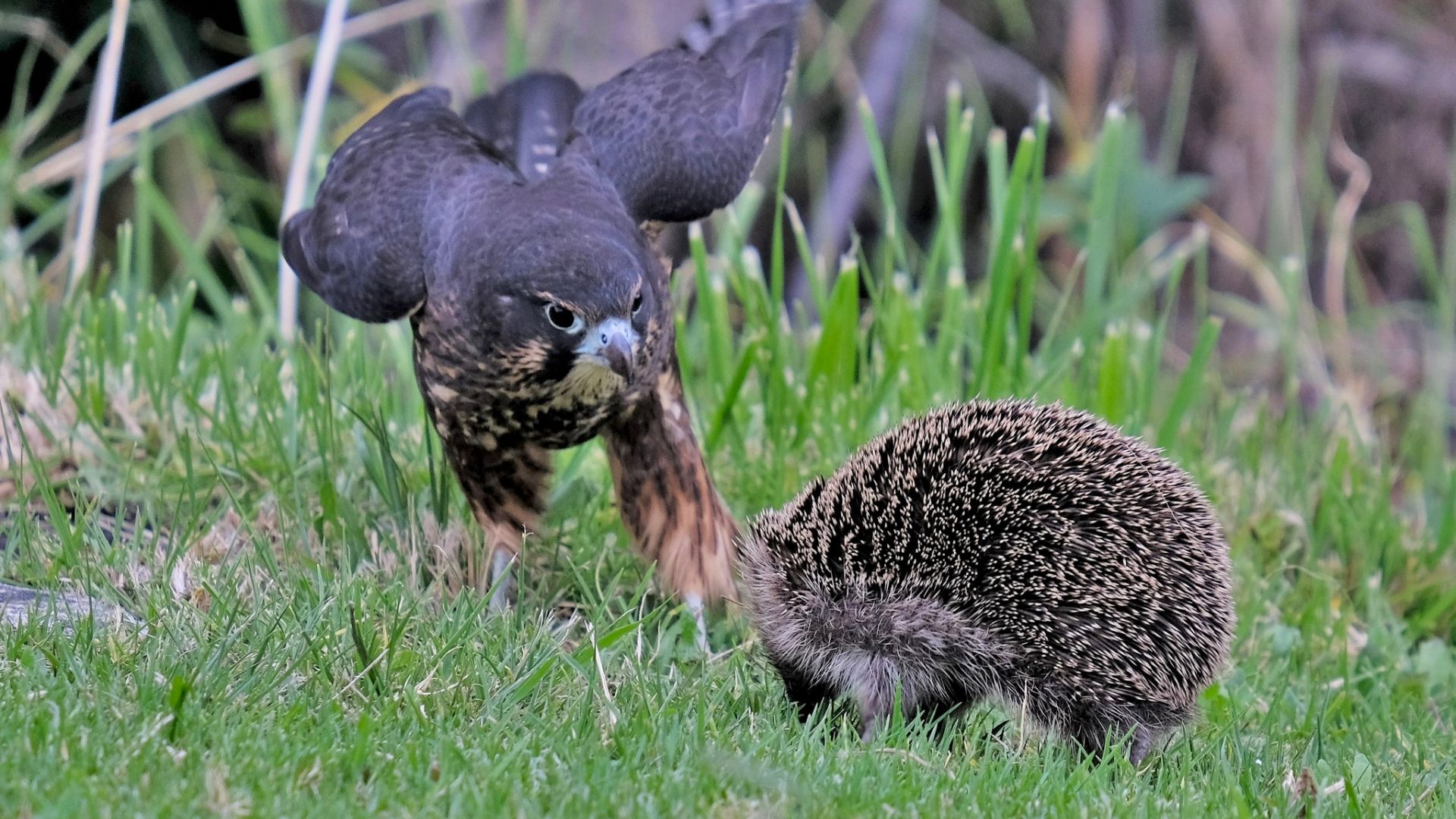
Tiny amphibians, Coromandel
Sara Smerdon is living the ultimate backyard wildlife dream. She lives in the Mahakirau Forest Estate in the Coromandel, a native forest subdivision filled with rare species protected by a special covenant.
The miniature Archey’s frog and Hochstetter’s frogs live in her backyard. She and her neighbours work hard to keep these super rare amphibians safe with ongoing introduced predator trapping, and it’s going pretty well.
They see frog and gecko footprints instead of rodents on their monitoring cards.
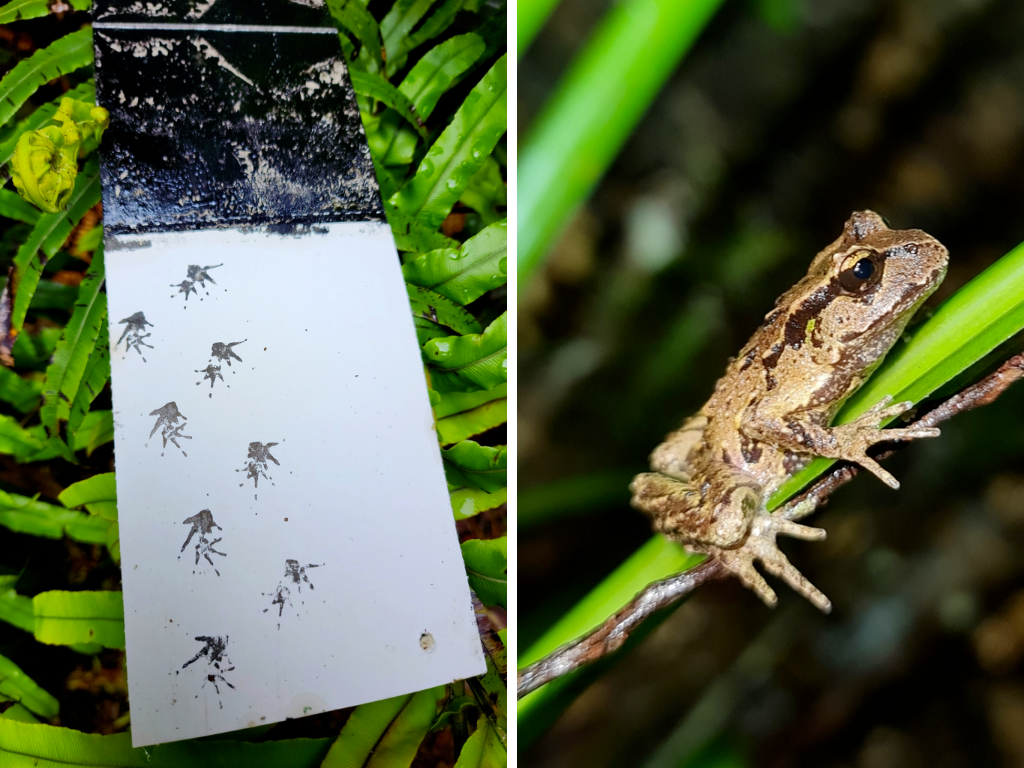
Black beauty, Hamilton
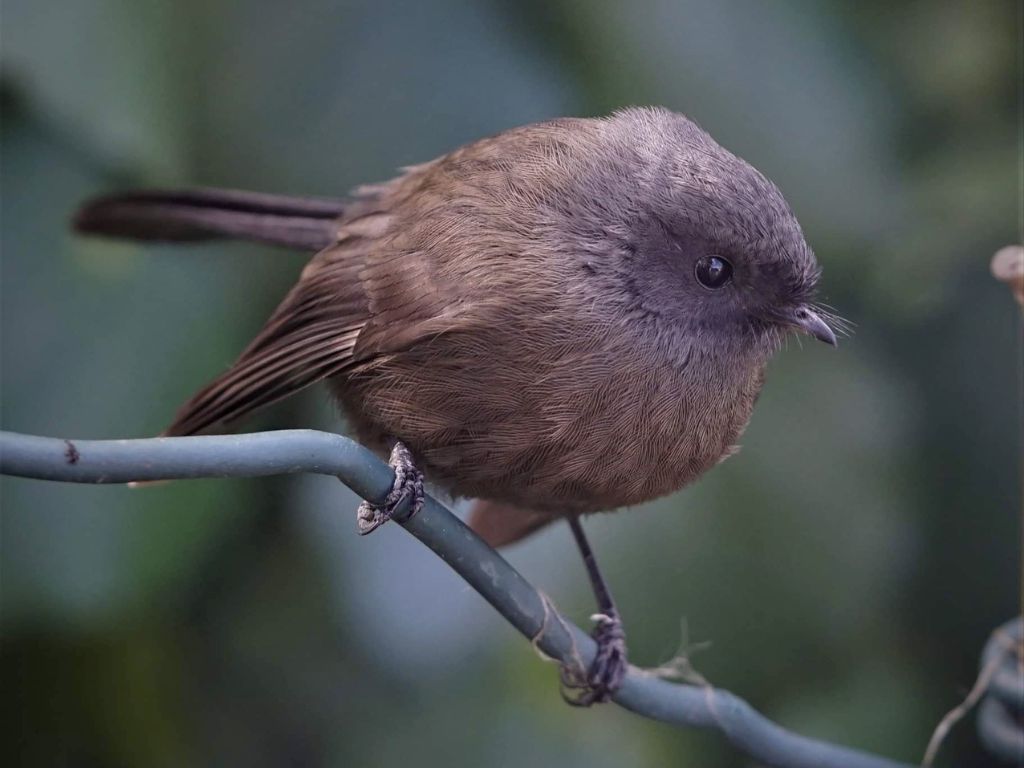
Catherine Beard snapped a picture of this super rare black morph pīwakawaka in Hillcrest, Hamilton.
Just how rare? It’s estimated they make up less than 1% of the pīwakawaka population in the North Island and around 5% in the South Island.
This unique dark-feathered bird lives in a forested gully surrounded by residential houses.
Catherine, along with several of her neighbours, trap along the gully and catch rats, possums, mice and hedgehogs to help protect the habitat.
A prickly encounter, Whākatane
Mike Ashley dashed for his camera to document this young kārearea (NZ falcon) inspecting a hedgehog in his Whākatane backyard.
The hedgehog wasn’t on the menu that day, instead ignoring the curious bird and ambling off.
Mike traps on his property, with a trap donated by local conservation group HALO Whākatane.
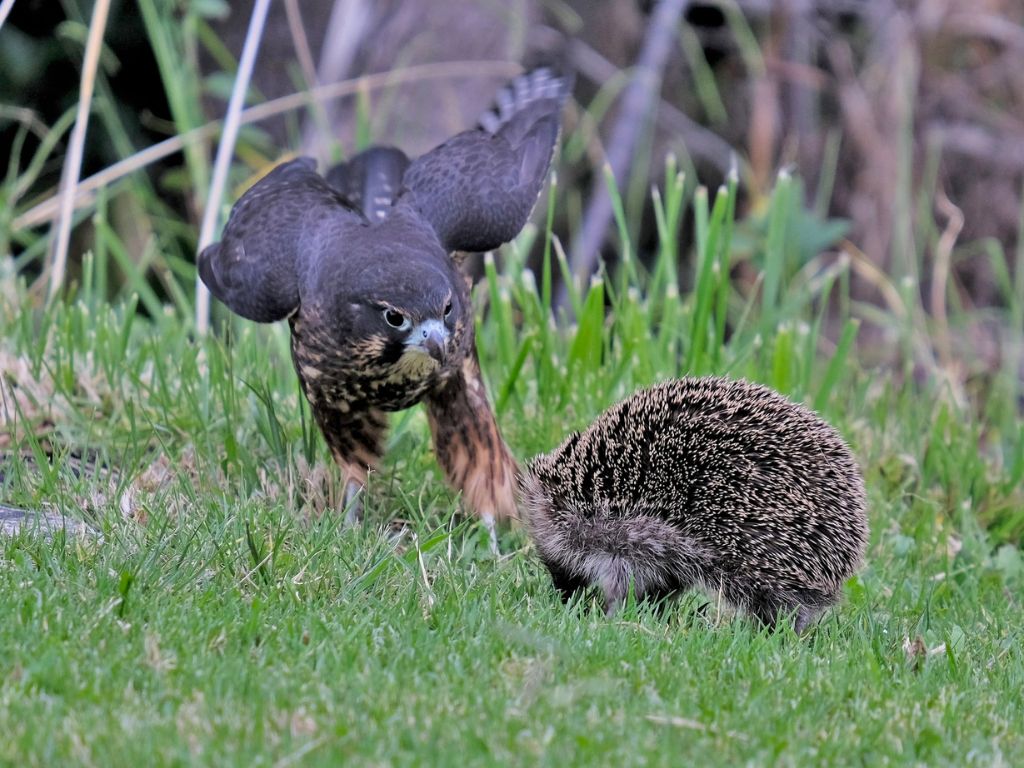
Noisy kiwi, Rakiura (Stewart Island)
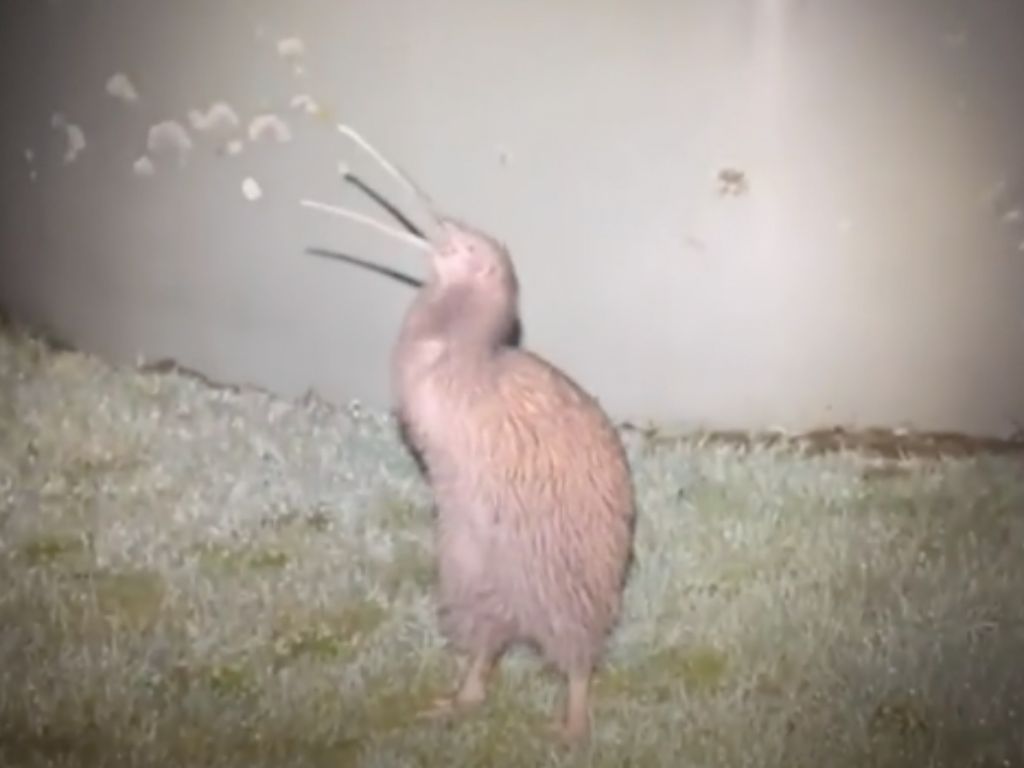
A lucky island resident was stoked to see a tokoeka (Stewart Island brown kiwi) darting around their water tank and then putting on a dinosaur-like vocal performance.
This tokoeka species is the largest of kiwi, and though nocturnal, they often forage during the day on Rakiura.
If you are ever lucky enough to experience something like this, remember to use a red torch to protect the light-sensitive kiwi eyes.
Lizard oasis, Hawke’s Bay
A blackberry bramble in the Hossack’s garden is home to the rare and endangered Hawke’s Bay skink.
Caelyn Hossack, 9, made headlines this year for discovering the skink colony – the first found outside the protection of Cape Sanctuary’s predator-proof fence.
Upon the discovery, the family transformed their garden into a lizard-friendly haven, laying out tin sheets and roofing tiles as sunbathing spots.
They’ve also planted native seedlings and installed predator traps to reduce the number of skink-hunting rats and mice.
